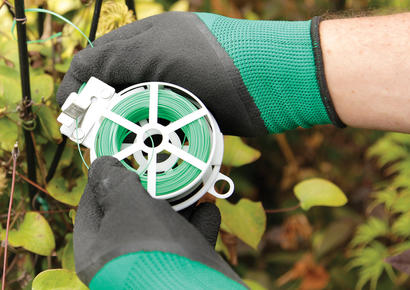
Winter House Plant Care
Our houseplants can provide a much-needed boost of greenery in the winter months, if the views from our windows are lacking an uplifting sign of life. While we use lights and heating to keep our homes warm and lit for our own comfort though the darker months, there is still a strong effect of the seasons on plants growing indoors. Our home environment in winter will tend to have;
- greatly reduced brightness and duration of daylight
- fluctuations in humidity and temperature caused by heating turning on and off
- cold draughts from open windows and doors, or gaps around window frames
These conditions mean that most houseplants will enter some level or dormancy, when they slow their growth or stop completely. Allowing them to sit drier by giving them less water and less frequently will help prevent them sitting in cold wet soil or becoming waterlogged. Only feed lightly, if at all. Plants that are further from windows and good sources of light benefit from being brought closer to the light. Be careful of placing foliage plants near radiators, which will cause foliage to become brown and crispy. You may think humidity issues can be overcome by manually misting plants daily, but the effect is only transitory. It may make you feel good, but if you have plants that really need humidity such as Calathea, either consider buying a plant humidifier, or placing them on a large gravel tray with water at the base.
Unless you have some good grow-lights that allow your plants to grow through winter, don’t take cuttings, divide or re-pot your plants. These are all best done when the plants are actively growing in spring and summer.
For drought-tolerant and sun-loving plants like cacti and succulents, the first thing to keeping them healthy over winter is keeping them especially dry, by not watering them at all. Temperature is important to consider, because watering combined with home heating can prevent these plants going into their natural winter dormancy, but low light levels will cause them to become etiolated, meaning they stretch and lean and become weak. In these circumstances, plants like Echeveria can become tall with an undesirable stem, instead of a beautiful rosette of leaves. When allowed to dry out thoroughly, many can actually tolerate surprisingly cold conditions, even far below freezing. So rather than trying to keep them growing with watering and heat, allow them to enter a natural winter dormancy by keeping them dry, placed in a cool and bright spot such as a windowsill or even an unheated greenhouse. In spring, they’ll naturally start to break their dormancy, which is visible by fresh new leaf growth. Take this as a sign that they are ready to be watered.
Sometimes you have to be cruel to be kind, and winter houseplant care is a testament to that. While it is true that our houseplants give back what we give them, this is more about thought and attention than simply giving them lots of water, light and nutrients.


